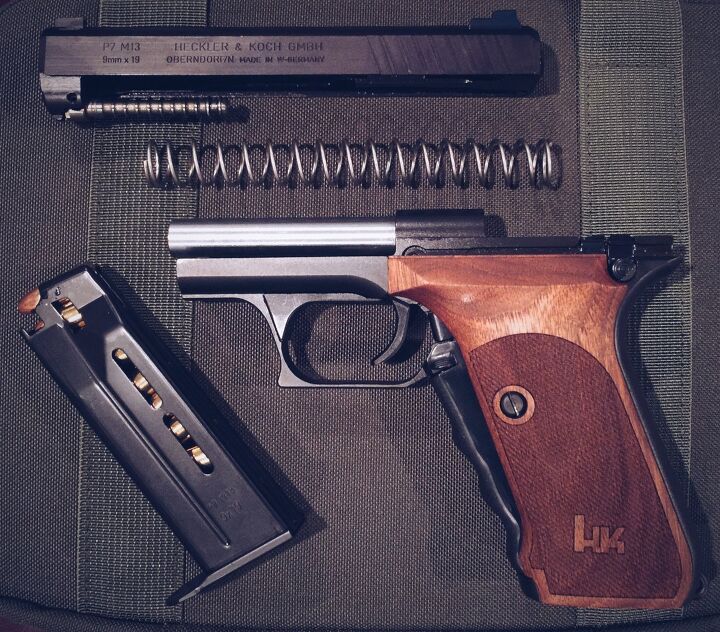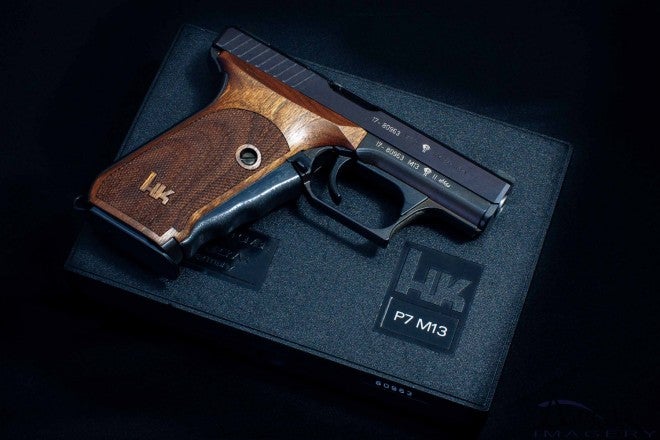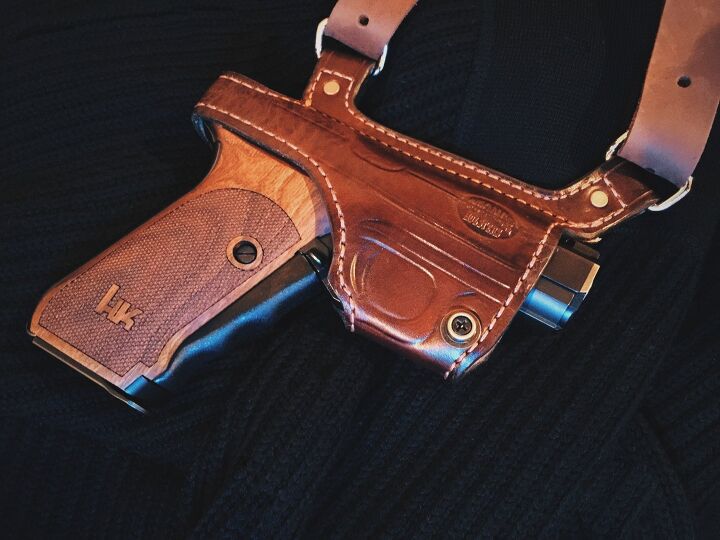Throughout the sixty-seven years Heckler and Koch have been in business, there are a number of firearms produced by the company that one could consider perennial. Chief among such designs would be the MP5 and or the G3, both weapons which continue to see use even fifty years after their creation. While for many, rifles and sub-machine guns would be the first to come to mind, HK has a history of producing pistols which define the concept of utilitarian and are practically indestructible.
For many collectors the P7 is a sought after example of HK’s design prowess. At seven inches long, five inches tall, an inch and a quarter wide, and weighing almost two pounds, the P7M13 is a rare version of the P7 which some consider to be the penultimate of the series. Originally designed as a higher capacity P7, the M13 variant utilizes a double-stack magazine capable of holding thirteen rounds of 9mm ammunition. For those unfamiliar with the P7 design, the pistol is based on the Barnitzke system, a gas-retarded blowback system that utilizes bleed-off gases from each round fired to drive an operating rod which cycles the slide. In many ways this system is similar to modern piston driven rifles (AK and AR variants) but in other ways the system is unique all to itself.

Heckler and Koch’s P7M13 shown field stripped. The gas piston and fixed barrel are clearly visible in this photograph.
Perhaps one of the most interesting facts about the P7M13 is that it was at one time a contender to be the US Army’s standard-issued pistol. While it ultimately was not chosen in favor of the Beretta M9, the P7M13 has found use among some police agencies, even today. Introduced in 1982, the M13 was produced until around 2000, while the rest of the P7 line continued until production ended completely in 2008.
Being fortunate enough to acquire a new-in-box M13 (dated 1988), I set out to experience firsthand what I had already read regarding the potential accuracy of the low bore axis, as well as the unique squeeze-cocking mechanism the P7 series had made famous (at least among HK enthusiasts). My first impressions did nothing but validate what I had read. While I wouldn’t consider myself to be a professional shooter by any means, I am more than competent when it comes to putting rounds on paper. With that said, after about the first magazine’s worth of ammo, I found myself being able to consistently keep rounds in the 10-ring, with only one or two occasionally drifting to the edge, at distances between seven and fifteen yards. While I could accomplish this with most other pistols in good repair and condition, what stood out to me so clearly was how easy it was to create a repeatable point of impact. To say I was happy with my purchase would be an understatement.
As an HK aficionado myself I’ve managed to collect examples of most of HK’s popular handguns (USP series, MK23, HK45) but the P7 was always a variant that had eluded me. Whether it was for some unfounded distrust of a striker-fired pistol, or an excuse that a P7 would be too expensive, I put off adding any variant to my collection. Needless to say I’m happy that I finally took the plunge and added this excellent example to my collection.
 Your Privacy Choices
Your Privacy Choices

